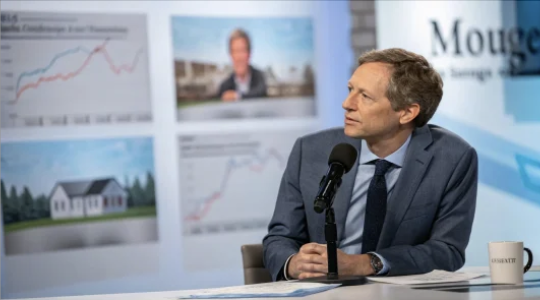The economic plan recently unveiled by Kamala Harris has sparked a heated debate among economists, policymakers, and the general public. Most see this as a political move, but the plan’s most significant initiative is to provide first-time homebuyers with $25,000 in assistance for their purchase. This proposal has been met with mixed reactions, with some lauding it as a necessary step towards making homeownership more accessible. In contrast, others question its potential impact on the housing market and the broader economy. This article aims to delve into the complexities of this issue, examining the possible benefits and drawbacks of this initiative.
Table of Contents
ToggleThe housing affordability
The housing market has been a significant concern for many Americans recently. The cost of homes has skyrocketed, making homeownership an unattainable dream for many. The government’s response to the 2008 housing crisis and the COVID-19 pandemic has exacerbated this issue.
After the 2008 housing crisis, the government implemented stringent regulations on banks and builders. While these measures were intended to prevent a similar situation from occurring in the future, they inadvertently led to a severe housing shortage. This shortage and the inflation caused by the government’s response to the COVID-19 pandemic have driven housing prices even higher.
The government’s decision to pump trillions of dollars into the system to mitigate the economic impact of the pandemic has led to a surge in inflation. This inflation has, in turn, driven up housing prices, making homes even more unaffordable for many Americans. The government’s subsequent decision to raise interest rates to curb inflation has further exacerbated this issue, driving mortgage prices higher and making homeownership even more unattainable.
View this post on Instagram
A post shared by Taylor Sohns – CFP®, CIMA®, MBA – Finance (@lifegoalinvestments)
The $25,000 assistance initiative: a solution or a problem?
In light of these challenges, Kamala Harris’s proposed $25,000 assistance initiative may seem like a necessary measure to help first-time homebuyers. However, it is essential to consider whether this initiative will genuinely help with affordability or merely drive prices higher, perpetuating the affordability problem.
On the one hand, the initiative could provide much-needed financial relief for first-time homebuyers, making homeownership more accessible. This could potentially stimulate the housing market, leading to increased economic activity and growth.
On the other hand, there are concerns that this initiative could inadvertently drive housing prices even higher. By providing first-time homebuyers with $25,000 in assistance, the government could potentially inflate demand for homes. This increased demand could drive up housing prices, making homes even more unaffordable for those who do not qualify for the assistance.
Moreover, there are concerns about the fairness of this initiative. Many current homeowners did not receive any assistance when they purchased their homes and may feel aggrieved at the prospect of their tax dollars being used to fund this initiative. This sentiment could fuel social and economic tensions, undermining the initiative’s benefits.
Conclusion
The $25,000 assistance initiative is a bold attempt to address the housing affordability crisis. However, its potential impact on the housing market and the broader economy is complex and multifaceted. While it could provide much-needed relief for first-time homebuyers, it could also inadvertently exacerbate the affordability problem by increasing housing prices. Moreover, it could fuel social and economic tensions due to perceived unfairness. As such, it is crucial for policymakers to carefully consider these potential implications before implementing this initiative.
The debate surrounding this initiative underscores the complexity of the housing affordability crisis and the challenges involved in addressing it. It is clear that a multifaceted approach is needed to provide financial assistance to first-time homebuyers and address the underlying issues driving up housing prices. Only then can we hope to make homeownership more accessible for all Americans.
Frequently Asked Questions
Q. What is the main initiative of Kamala Harris’s economic plan?
The main initiative of the economic plan is to provide first-time homebuyers with $25,000 in assistance for their purchase.
Q. What are the potential benefits of the $25,000 assistance initiative?
The potential benefits of the $25,000 assistance initiative include providing much-needed financial relief for first-time homebuyers, making homeownership more accessible, and potentially stimulating the housing market, leading to increased economic activity and growth.
Q. What are the potential drawbacks of the $25,000 assistance initiative?
The potential drawbacks of the $25,000 assistance initiative include inadvertently driving housing prices even higher by inflating demand for homes, making homes even more unaffordable for those who do not qualify for the assistance. There are also concerns about the fairness of this initiative, as many current homeowners did not receive any help when they purchased their homes.
Q. What is the housing affordability crisis?
Many Americans are concerned about housing affordability. The cost of homes has skyrocketed, making homeownership an unattainable dream. The government’s response to the 2008 housing crisis and the COVID-19 pandemic has exacerbated this issue.
Q. How did the government’s response to the 2008 housing crisis and the COVID-19 pandemic affect the housing market?
The government’s response to the 2008 housing crisis led to stringent regulations on banks and builders, inadvertently leading to a severe housing shortage. The government’s decision to pump trillions of dollars into the system to mitigate the economic impact of the COVID-19 pandemic led to a surge in inflation, driving up housing prices. The subsequent decision to raise interest rates to curb inflation further exacerbated this issue, driving mortgage prices higher and making homeownership even more unattainable.
Q. What is the conclusion on the $25,000 assistance initiative proposed by Kamala Harris?
The $25,000 assistance initiative is an attempt to address housing affordability. However, its potential impact on the housing market and the broader economy is complex and multifaceted. While it could provide much-needed relief for first-time homebuyers, it could also inadvertently exacerbate the affordability problem by increasing housing prices. Moreover, it could fuel social and economic tensions due to perceived unfairness. Therefore, it is crucial for policymakers to carefully consider these potential implications before implementing this initiative.

















